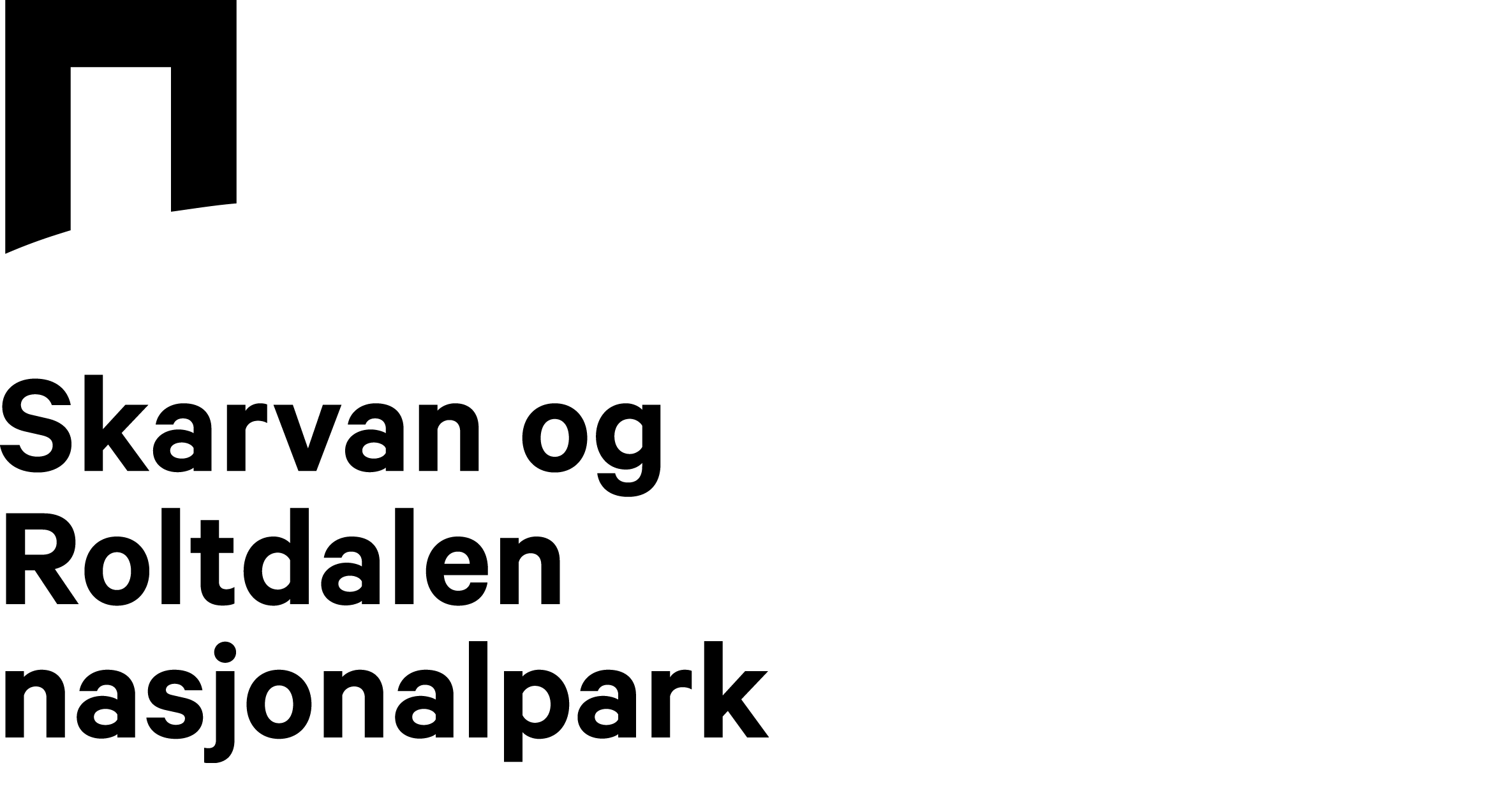
Plant and animal life
The old-growth (primeval) spruce forest found in Roltdalen is the park’s most significant botanical feature. The forest is full of magnificent vast trees, rich in a broad diversity of mosses, lichens, and fungi. Typical bird species found in the old-growth forests include the great tit, black tit, woodpecker and capercaillie. Some mountain and forest pastures are growing back while others still have open acreage potentially allowing different kinds of plants and fungi to grow. Birds of prey such as kestrel and golden eagles can be seen. And among other things, there also wolves, moose, hares, and grouse.
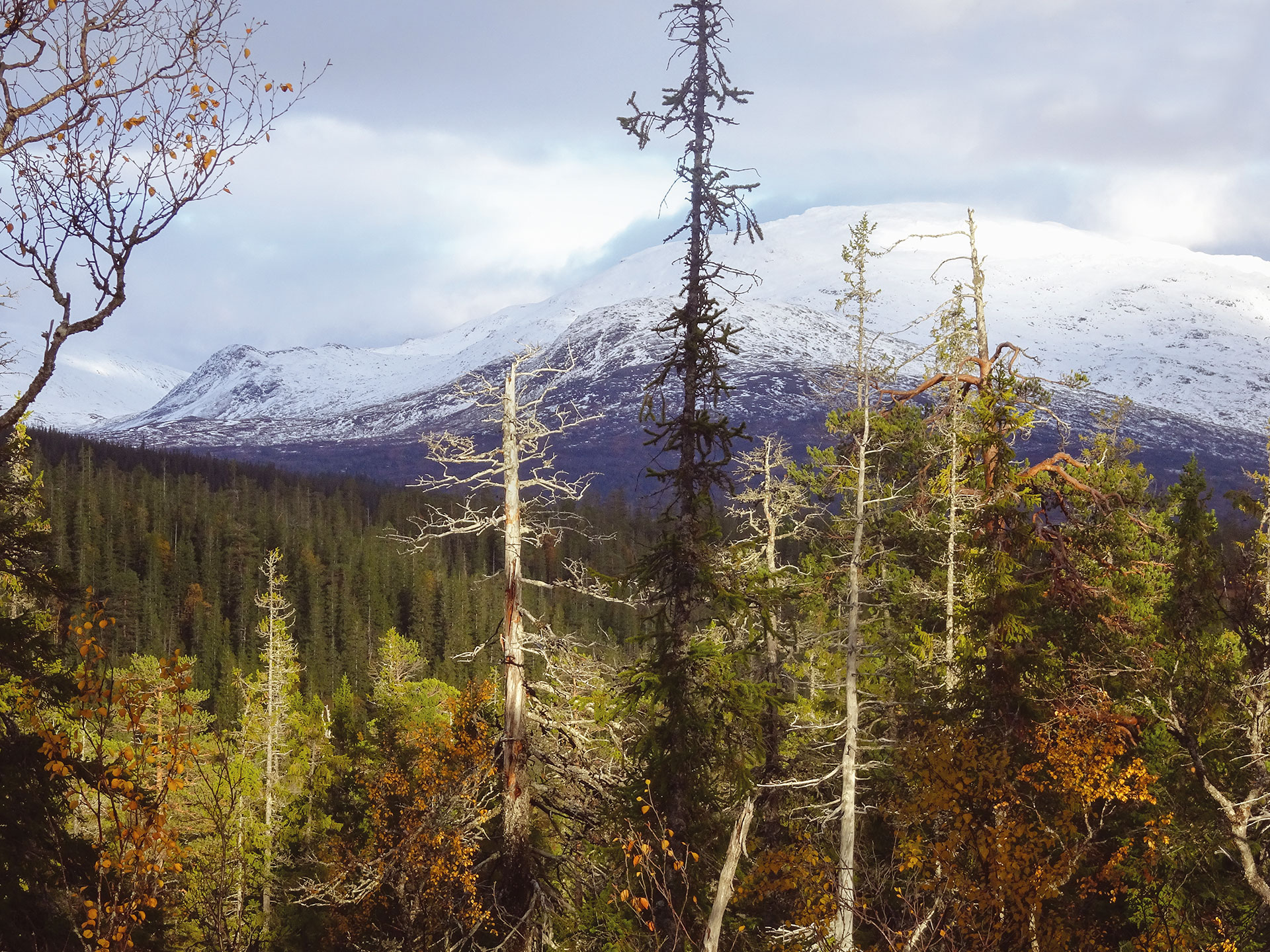
Plant and animal life
The old-growth (primeval) spruce forest found in Roltdalen is the park’s most significant botanical feature. The forest is full of magnificent vast trees, rich in a broad diversity of mosses, lichens, and fungi. Typical bird species found in the old-growth forests include the great tit, black tit, woodpecker and capercaillie. Some mountain and forest pastures are growing back while others still have open acreage potentially allowing different kinds of plants and fungi to grow. Birds of prey such as kestrel and golden eagles can be seen. And among other things, there also wolves, moose, hares, and grouse.

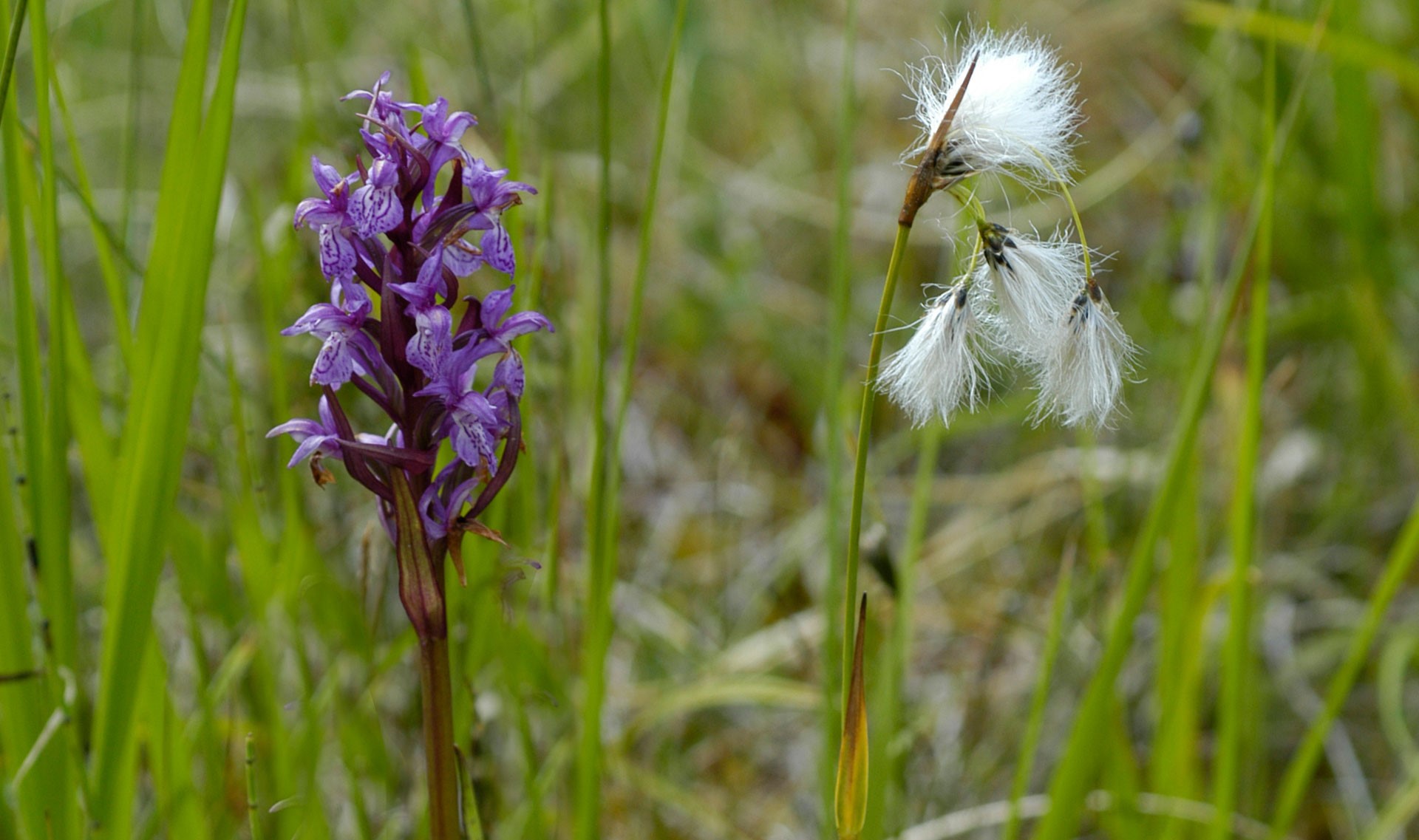
Lapland march and broad-leaved bog-cotton
Plants
There is a wide range of plant life in the national park. Spruce forests with blueberry heather, open pine forests with heather heaths, a wide range of bog areas, rich grass bogs and birch forests with lush plant growth (high perennials). Areas on richly calcareous bedrock have lush vegetation and provide ideal conditions for various species of orchids, among other things. There are also some instances of cultivated vegetation visible on the many mountain and forest pastures, marshes and what were once hayfields.
The orchids: The heavy rainfall that occurs in the region, especially during the summer, has helped to create a high number of bogs. There are examples of rich peat blogs especially on the north and west sides of Roltdalen and by Lake Stråsjøen. Orchids found here include blood marigold, Lapland march orchid, the small white orchid, wheat-leaf orchid, lesser butterfly-orchid, and the chalk-fragrant orchid.
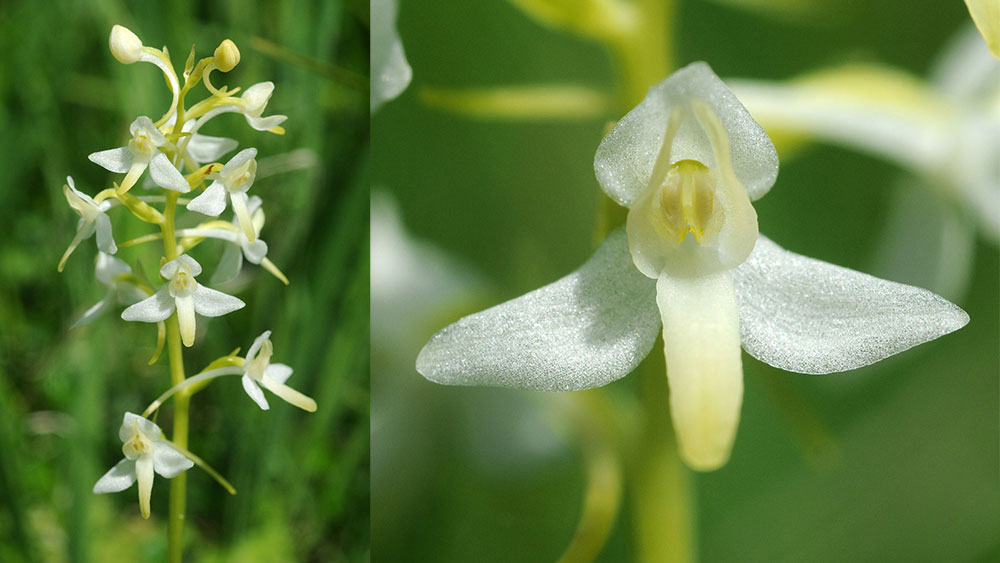
Lesser butterfly orchid
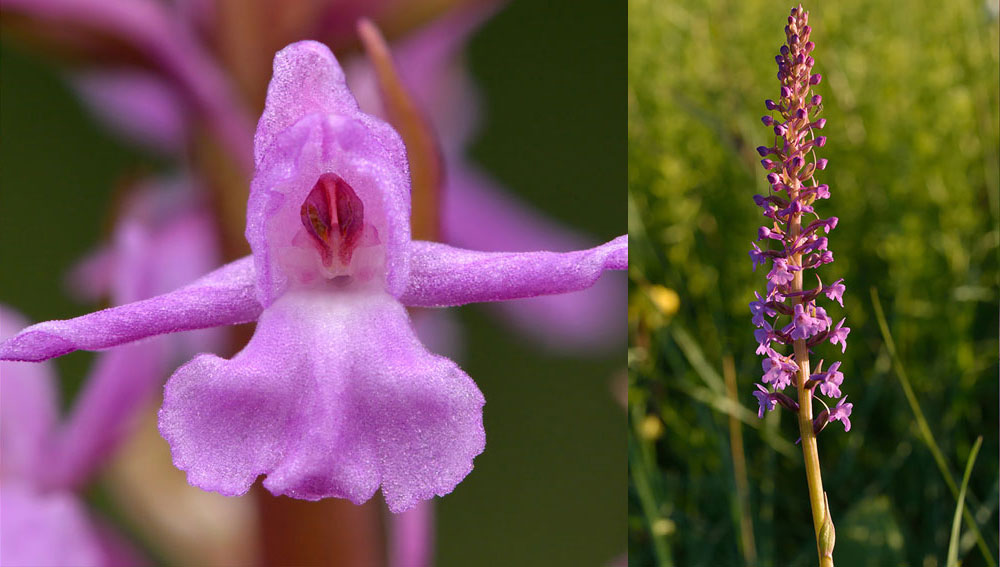
Chalk-fragrant orchid
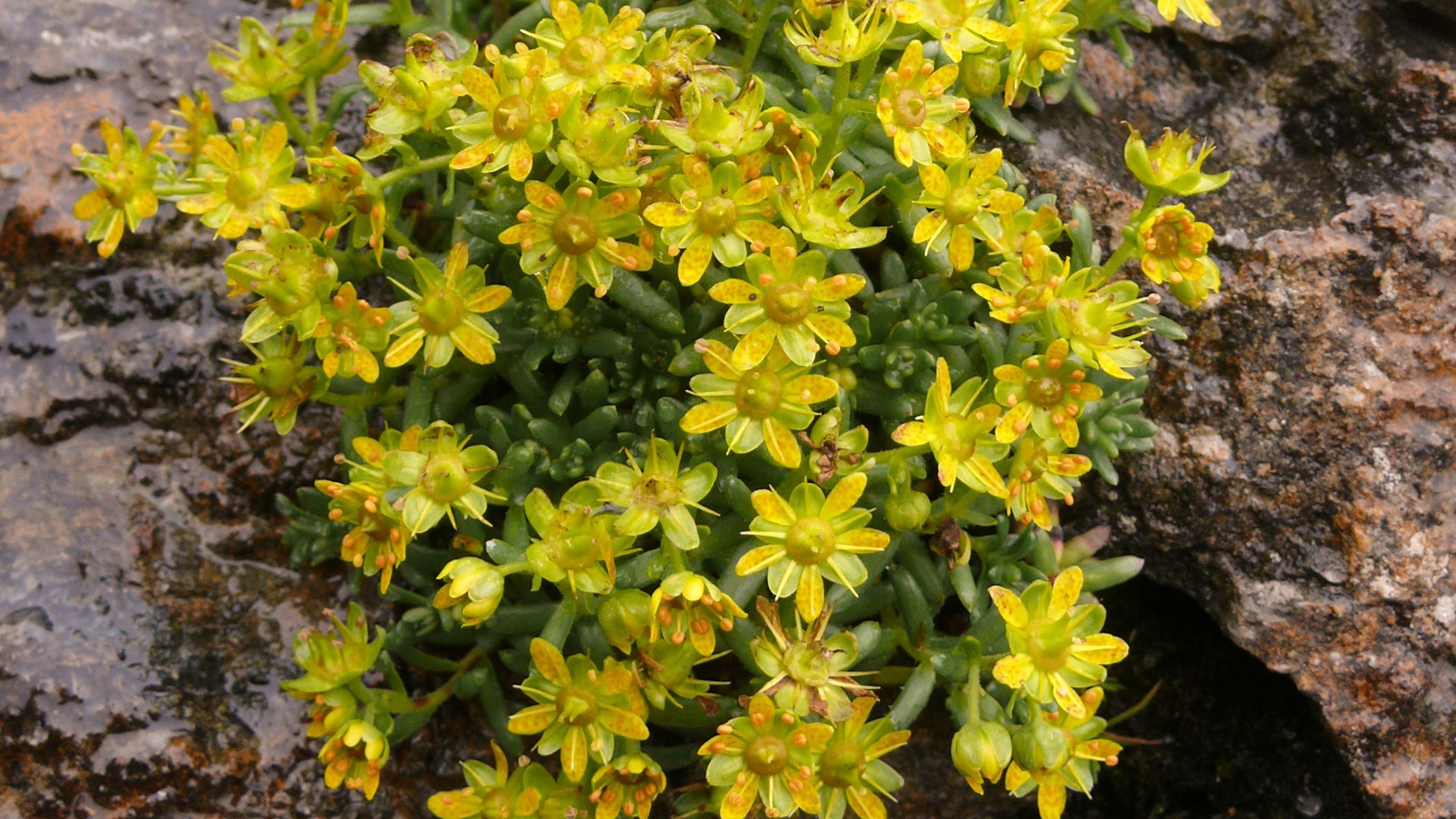
Yellow mountain saxifrage
Dead wood gives life
Old-growth forest is important for a range of rare or protected species. In the old-growth spruce forest in Roltdalen, the trees are both vast in terms of size and age. It’s not unusual to find trees here that are over 200 years old. Many species of mosses, fungi and lichens are to be found here. Fungi and lichens feed on the decomposition of dead plants and trees, and the species have different preferences when it comes to the age and size of what they break down. Old-growth forests are therefore important as they maintain a rich biological diversity of fungi, lichens, mosses and insects. This is turn provides food for those higher up the food chain such as birds, mammals, and beasts of prey.
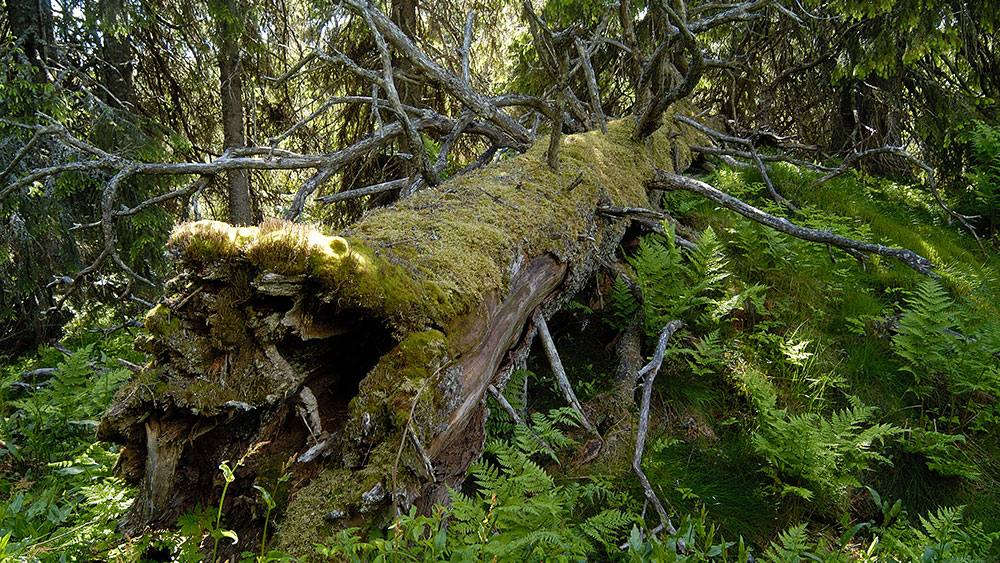
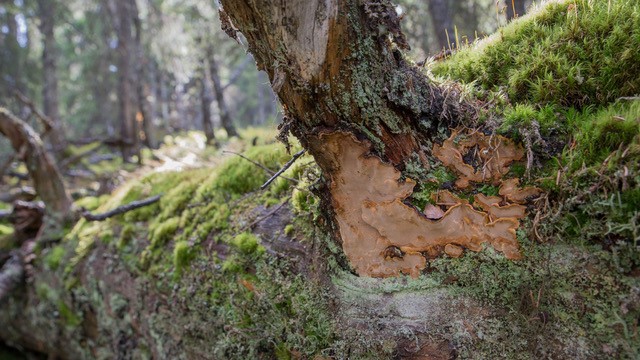
Phellinus nigrolimitaus
The wood-decomposing fungus Phellinus nigrolimitaus is to be found in old coniferous forests, primarily spruce forests, but also in pine forests. This species of fungi (saprotrophs) is a medium-to-strong wood-decomposing fungus that thrives on coarse spruce logs that are lying on the ground. According to the Norwegian Red List (2015), the species is under threat.
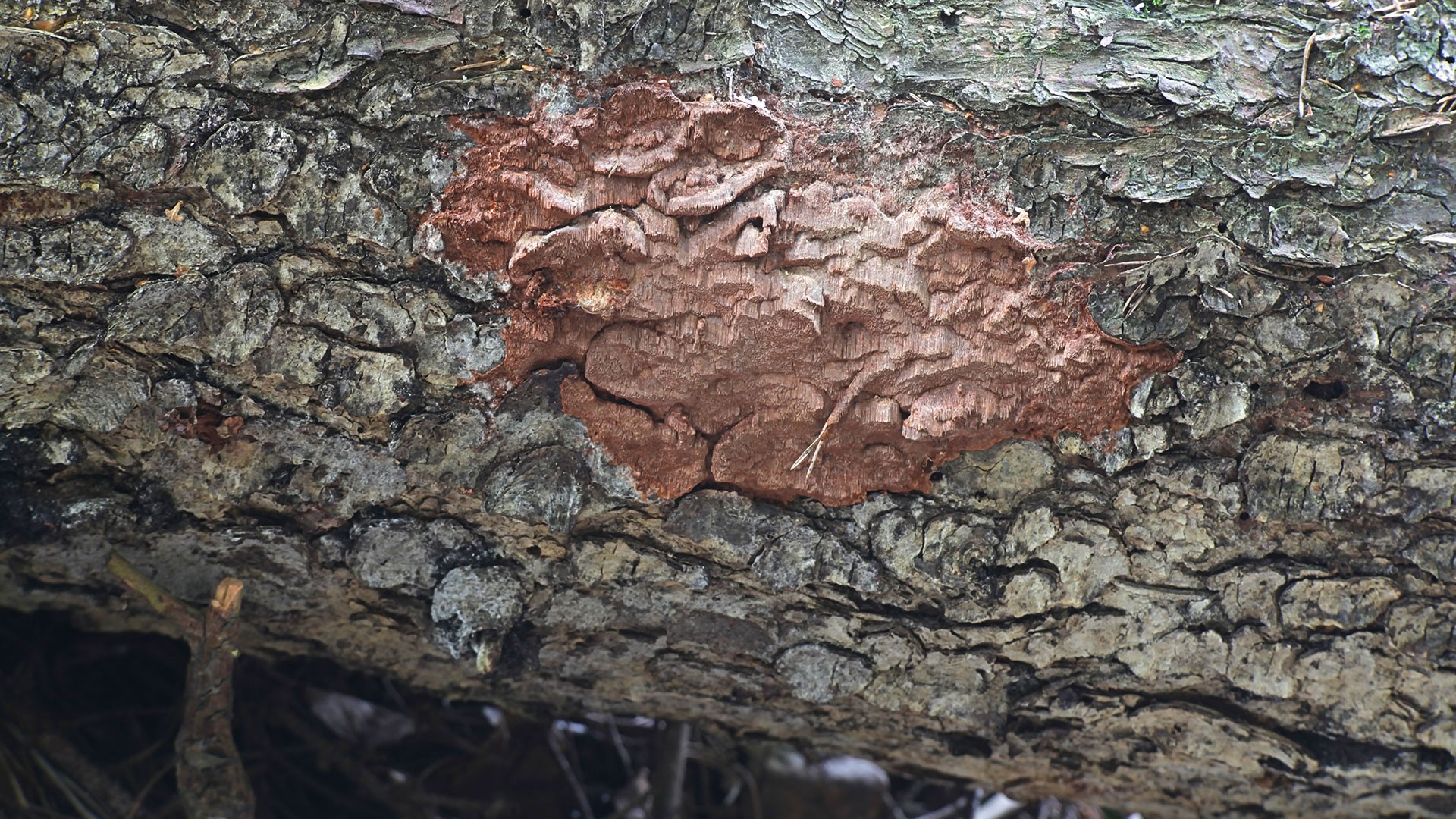
Rusty Porecrust (Phellinus ferrugineofusus) is a plant pathogen:
Rusty Porecrust is only found on dead spruce trees. Mostly found on branches, it can also be found on bark, under twigs, etc. The stems are rarely rooted, and they form a covering of about 15cm in diameter. The fungus often grows on bark.
Dead wood gives life
Old-growth forest is important for a range of rare or protected species. In the old-growth spruce forest in Roltdalen, the trees are both vast in terms of size and age. It’s not unusual to find trees here that are over 200 years old. Many species of mosses, fungi and lichens are to be found here. Fungi and lichens feed on the decomposition of dead plants and trees, and the species have different preferences when it comes to the age and size of what they break down. Old-growth forests are therefore important as they maintain a rich biological diversity of fungi, lichens, mosses and insects. This is turn provides food for those higher up the food chain such as birds, mammals, and beasts of prey.
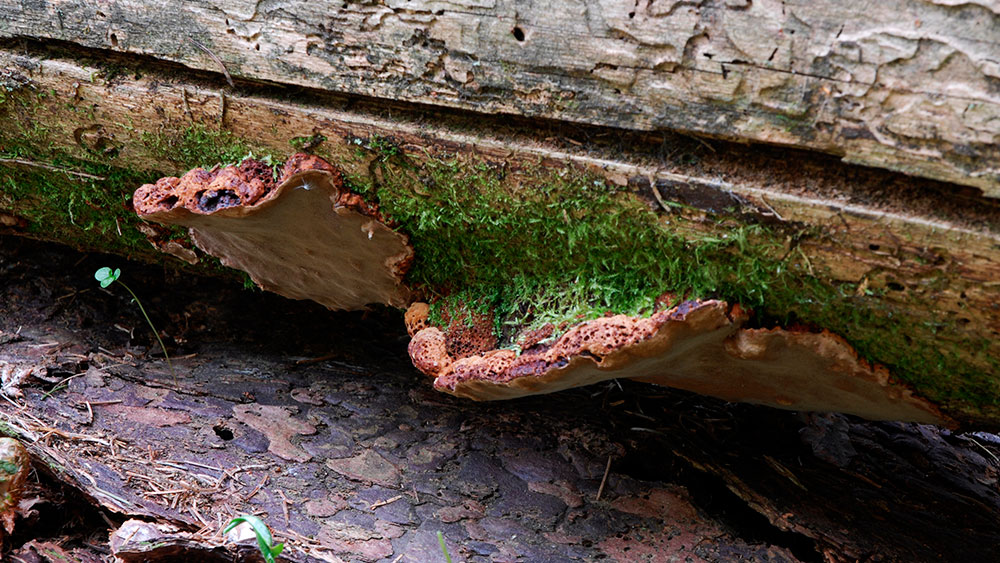
Phellinus nigrolimitaus
The wood-decomposing fungus Phellinus nigrolimitaus is to be found in old coniferous forests, primarily spruce forests, but also in pine forests. This species of fungi (saprotrophs) is a medium-to-strong wood-decomposing fungus that thrives on coarse spruce logs that are lying on the ground. According to the Norwegian Red List (2015), the species is under threat.

Rusty Porecrust (Phellinus ferrugineofusus) is a plant pathogen:
Rusty Porecrust is only found on dead spruce trees. Mostly found on branches, it can also be found on bark, under twigs, etc. The stems are rarely rooted, and they form a covering of about 15cm in diameter. The fungus often grows on bark.
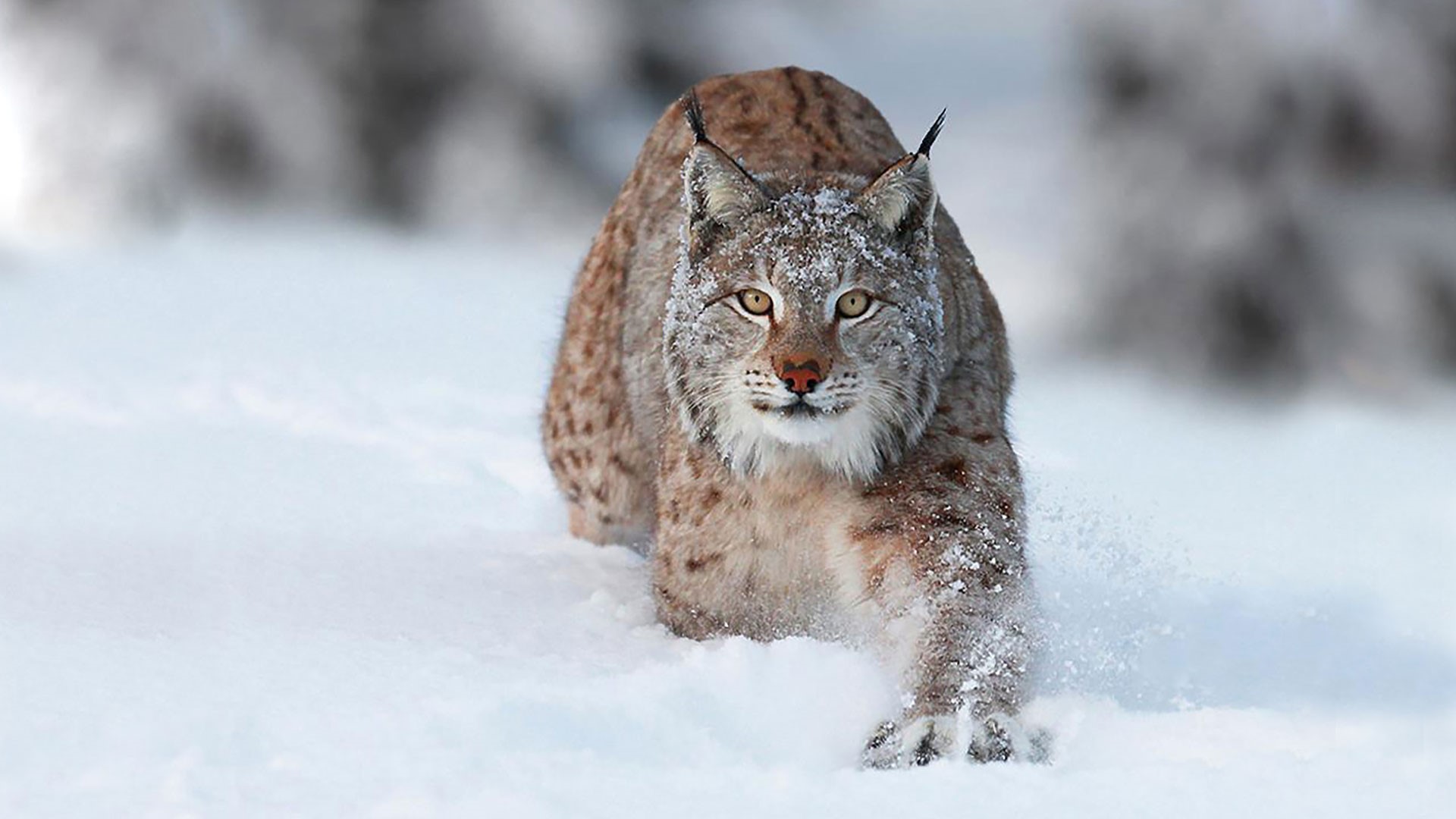
Wildlife
In the national park there are abundant populations of hares, red foxes, and occasionally small rodents such as lemmings. Elk thrive here too. In summer you can find elk high in the mountains searching for food. Reindeer are also commonly seen in the national park. These are, however, not wild reindeer but belong to Sámi herds. Reindeer are a beautiful sight and a natural part of the fauna in Skarvan and Roltdalen National Park. Beavers and otters are also to be found, inhabiting areas along the watercourses. All four major predators are found in the national park; however, the most common is the wolverine. In winter, it is not uncommon to see wolverine tracks in the snow. Keep a safe distance from all wildlife so as not to disturb them. This is particularly important during the mating season.
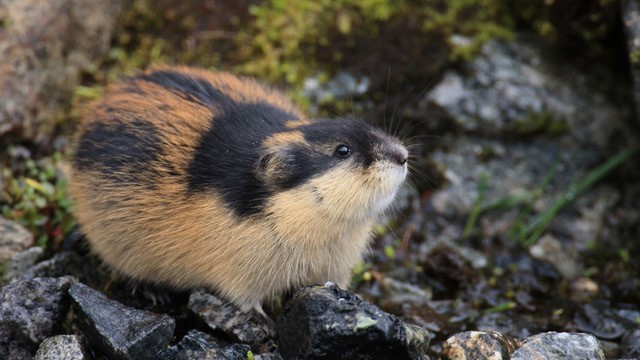
Lemmings are a small rodent belonging to the hamster family. A lemming is easy to recognise by the characteristic colour of its fur. Lemmings live in the mountains above the tree line. One of its major characteristics is that the population size fluctuates considerably during the year. Most predators eat lemmings, but the species is a particularly important source of food for mountain foxes, snowy owls, long-tailed skua and mountain warblers. If there are too few lemmings it will be difficult for these species to survive. Lemmings are a key species in the mountain ecosystem for both plant life and predators alike.
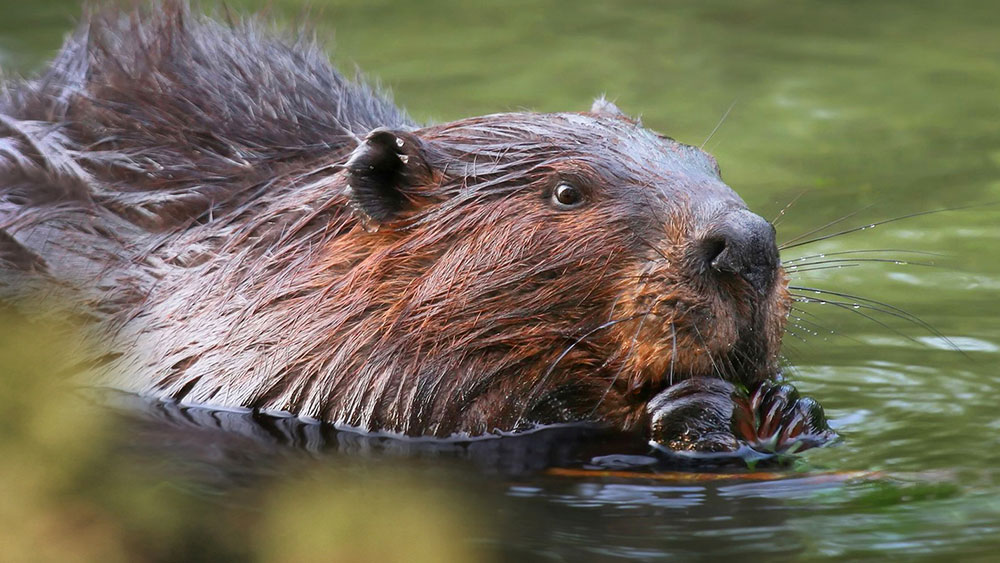
Beavers are the largest rodents in the northern hemisphere. They usually weigh between 15-20 kg but can sometimes weigh up to 40 kg. Beavers can most easily be recognised by their flat tail, which looks like a paddle.
The beaver is also known for building lodges and dams. A beaver can cut down a relatively tall tree with its strong rodent teeth. The beaver is well-suited to life in the water and can stay under water for up to 15 minutes.
.
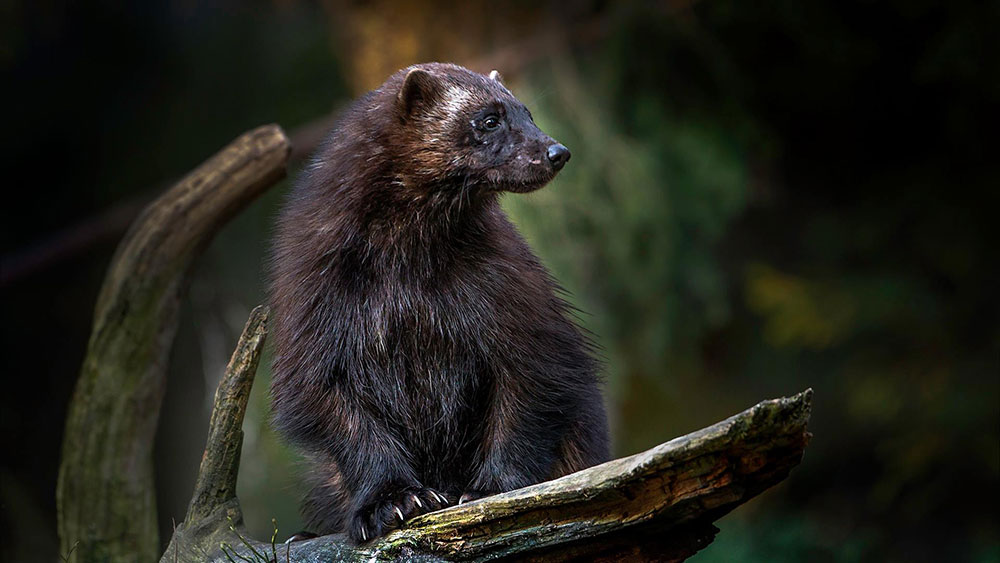
Wolverine (also known as “glutton”) are the largest martens in Norway. They are cunning and live in the mountains and the mountain forests. Wolverine feed on small rodents, but also reindeer and grazing sheep.
Wolverine are in danger of extinction according to the Norwegian Red List. The wolverine gives birth to 2-3 cubs during February / March. The wolverine is characteristically a solitary scavenger. If you are lucky, you might see the characteristic tracks of wolverine in the snow in the winter.
Birds
Bring your binoculars! What can you see?
Birds of prey like the peregrine falcon and golden eagle can be spotted in the national park. They start nesting already at the end of March but can easily be disturbed. Both the large birds and grouse thrive in the coniferous forests, and there is also good habitat for the black grouse, which is increasingly under threat of extinction, both in the birch forest and in the mountains. Lake Stråsjøen and the island of Prestøya, the Torsbjørkdalen valley and the Kalvskinnsfloene waters are examples of important habitats for several ducks and wetland birds.
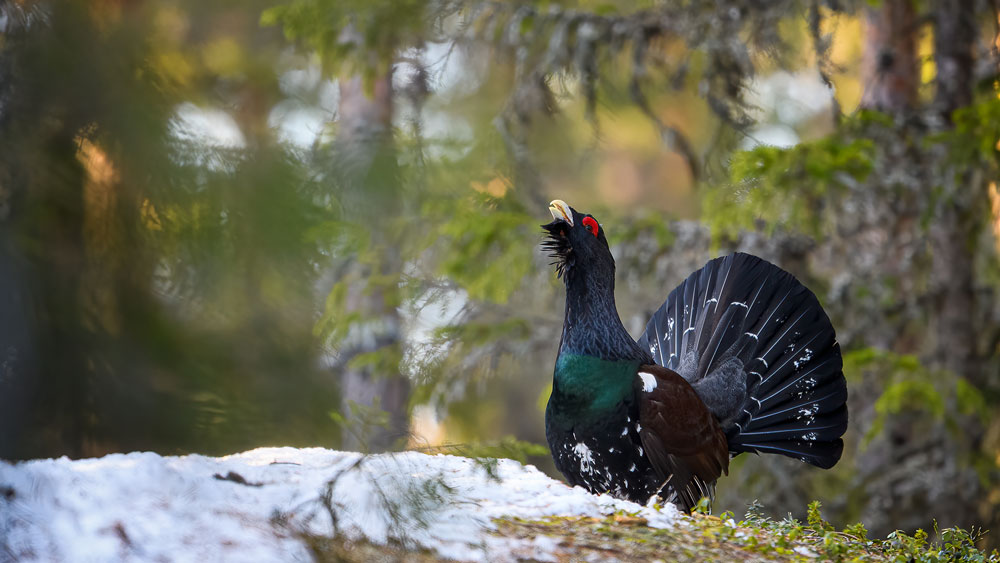
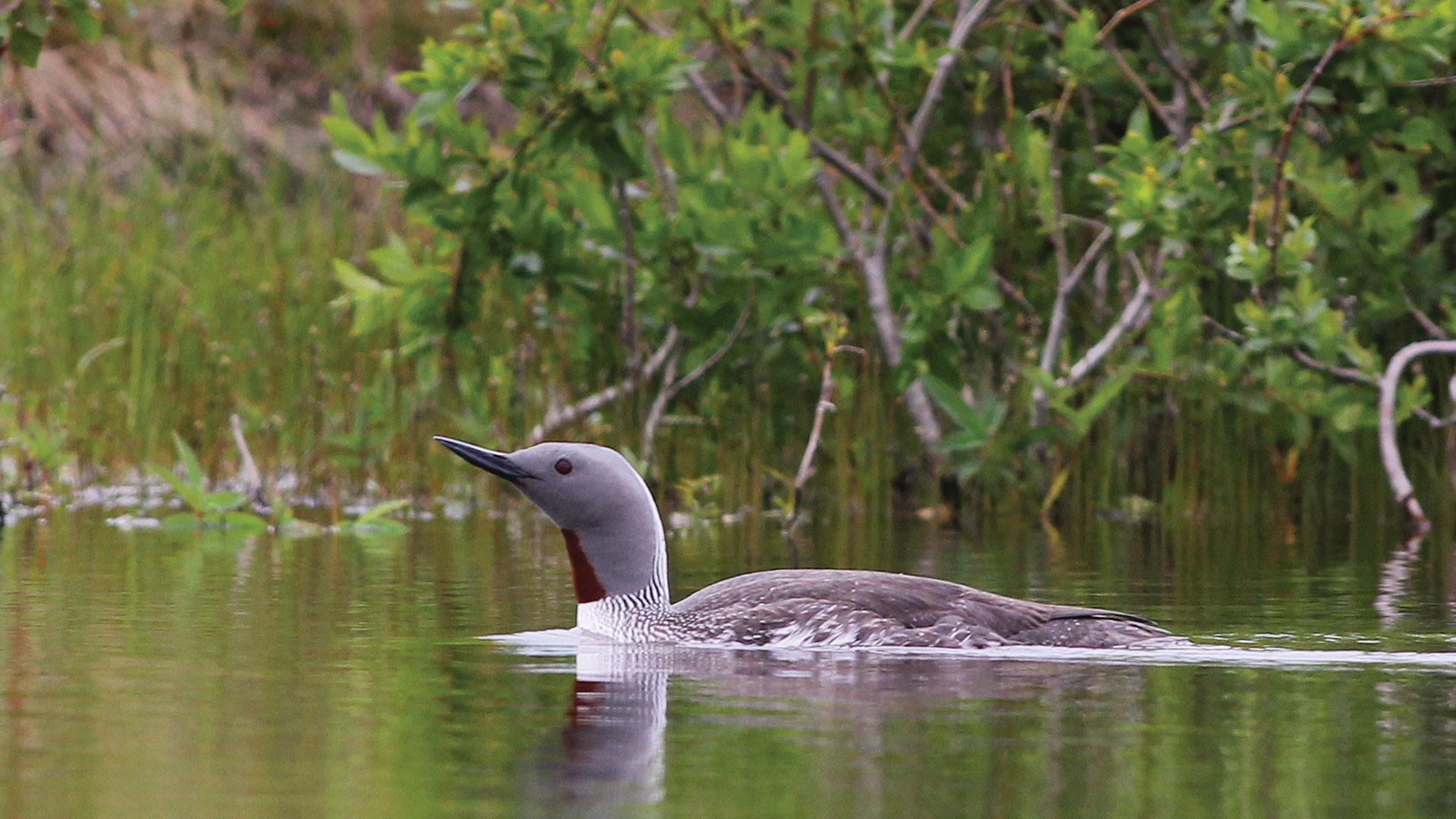
The red-throated diver is a species of bird from the diver (US. loon) family and resembles the Black-throated diver (US. Arctic loon). In the spring/summer it changes its plumage on its back which becomes a dark brown-grey, and unlike the Black-throated diver does not have white spots. The red-throated diver has a dark, reddish-brown throat patch which can look like the black-throated diver’s black-speckled throat patch. The Red-throated diver nests by higher-situated ponds and lakes. Both the Red-throated diver and the Black-throated diver are partly migratory birds, migrating primarily southwards down the Norwegian coast in winter.
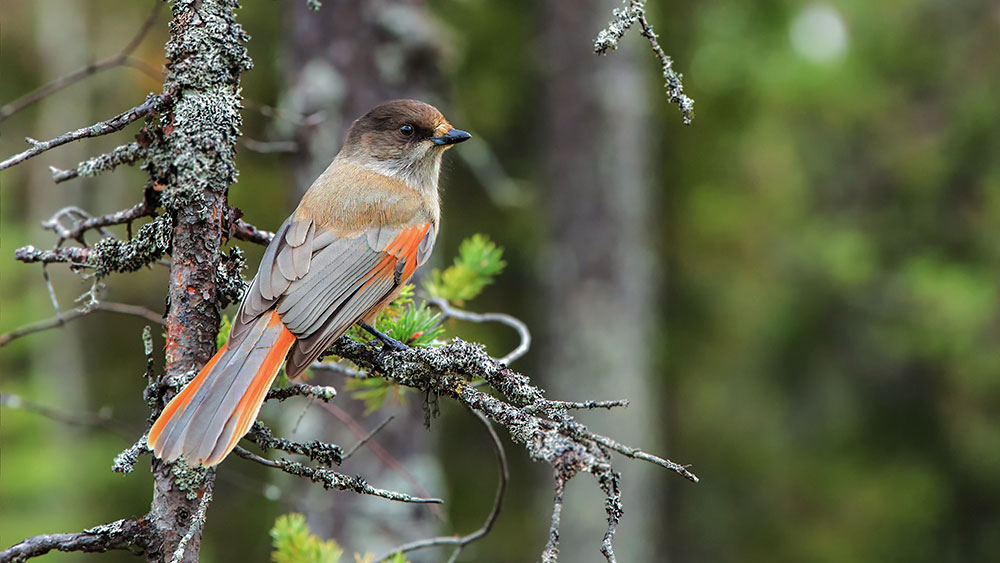
The Siberian jay is a member of the crow family. It has a trusting nature and can be a friendly visitor at picnic areas in the mountain forests. The Siberian jay is easily recognisable by its rusty-brown plumage and paler forehead. It lives in the forests close to the mountains all year round making it one of the national park’s resident birds
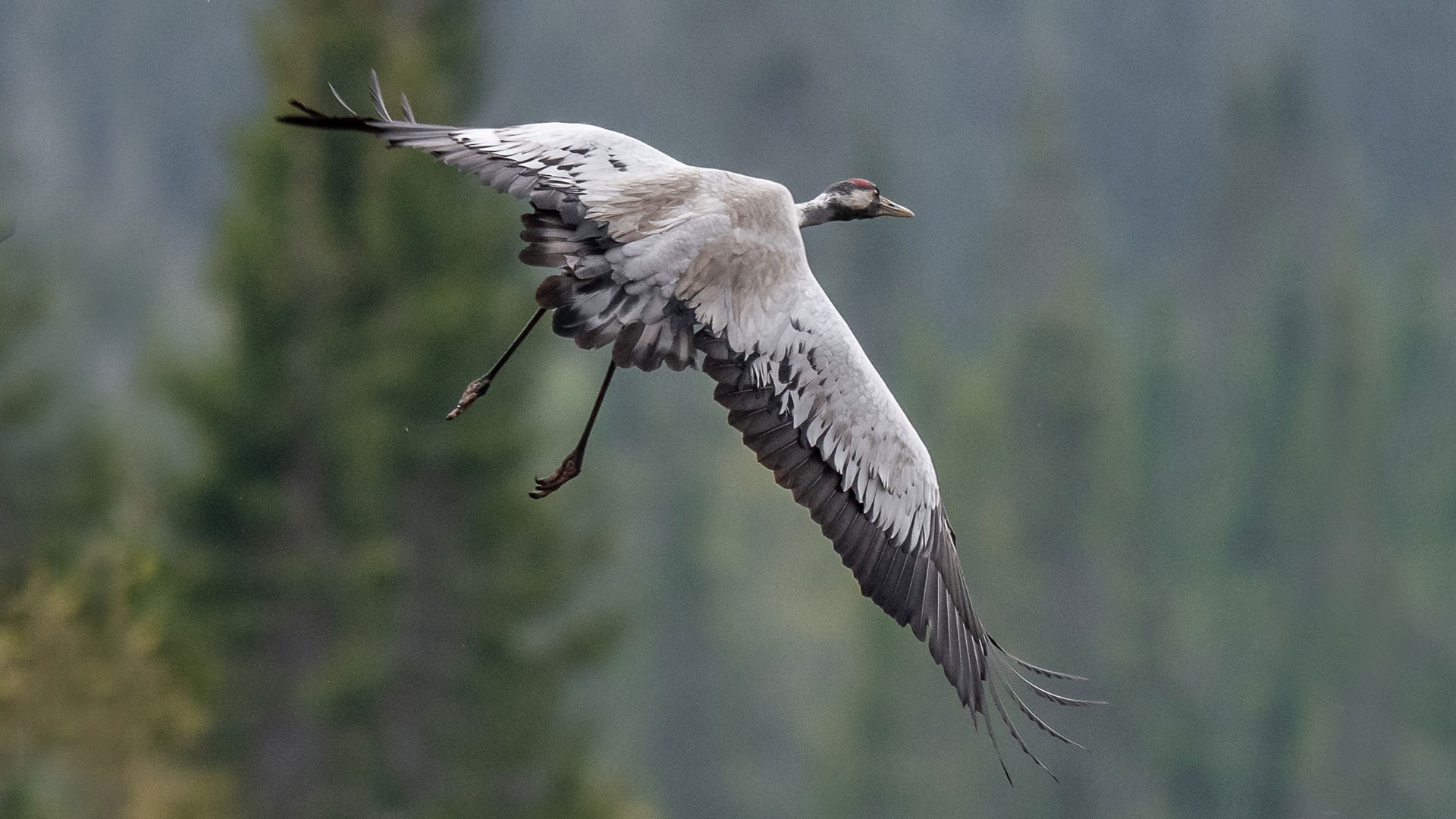
The common crane is a large, beautiful bird that belongs to the crane family. It has long legs, a long neck and flies with its neck extended. The sound of its call resembles a trumpet. The common crane nests on bogs both in the forest and mountains. Norwegian crane winter, primarily, in Spain.
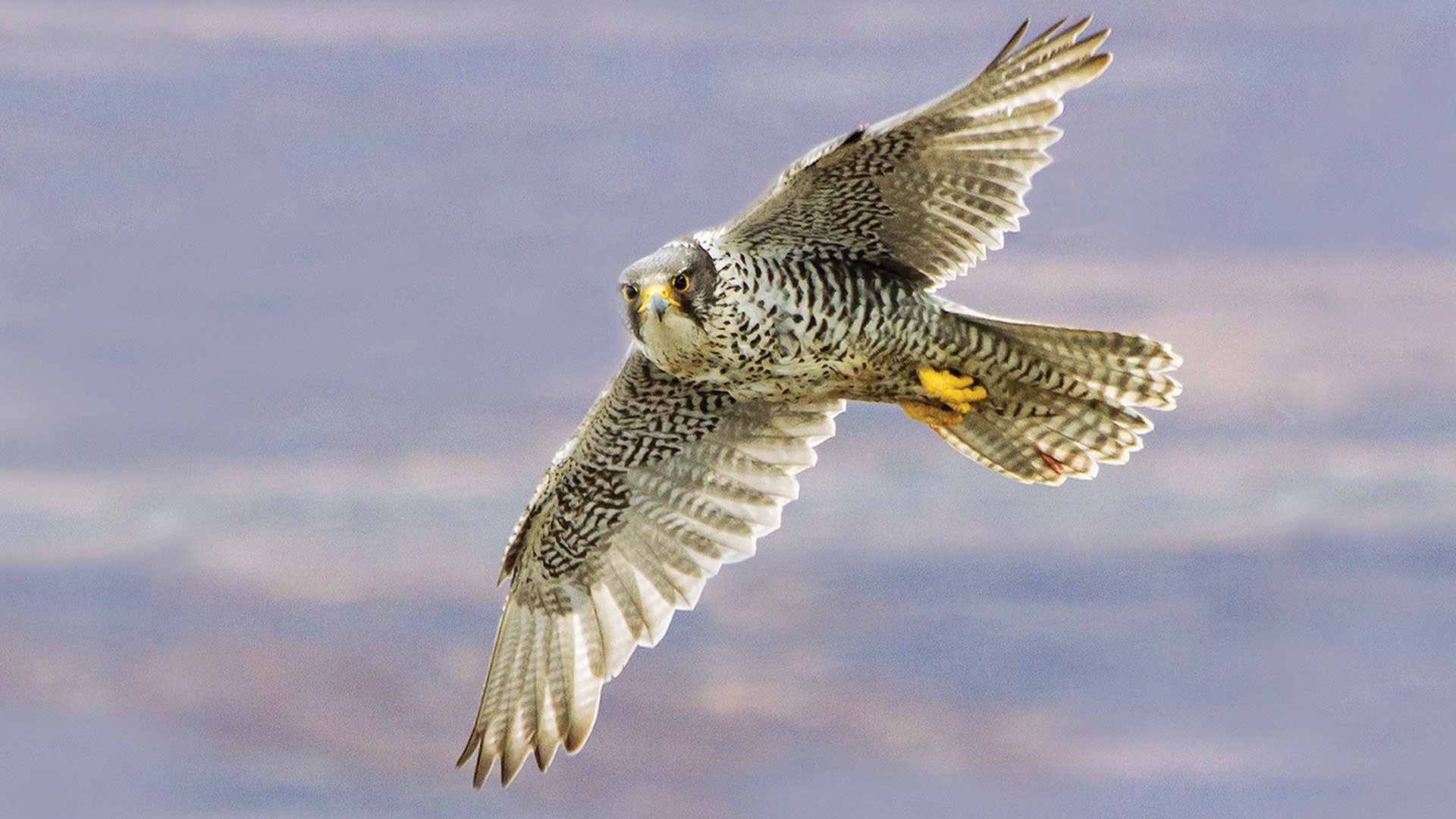
Peregrine falcons and golden eagles are among the birds of prey to be found in the national park. Of the two, it is much rarer to see a peregrine falcon. It is endangered because of the low number of grouse in the national park, and because it is one of the breeds targeted by egg collectors. The golden eagle is the second largest bird of prey after the sea eagle. It feeds on other birds and small game; however, it is sometimes known to catch larger game such as reindeer calves. It also eats carrion.
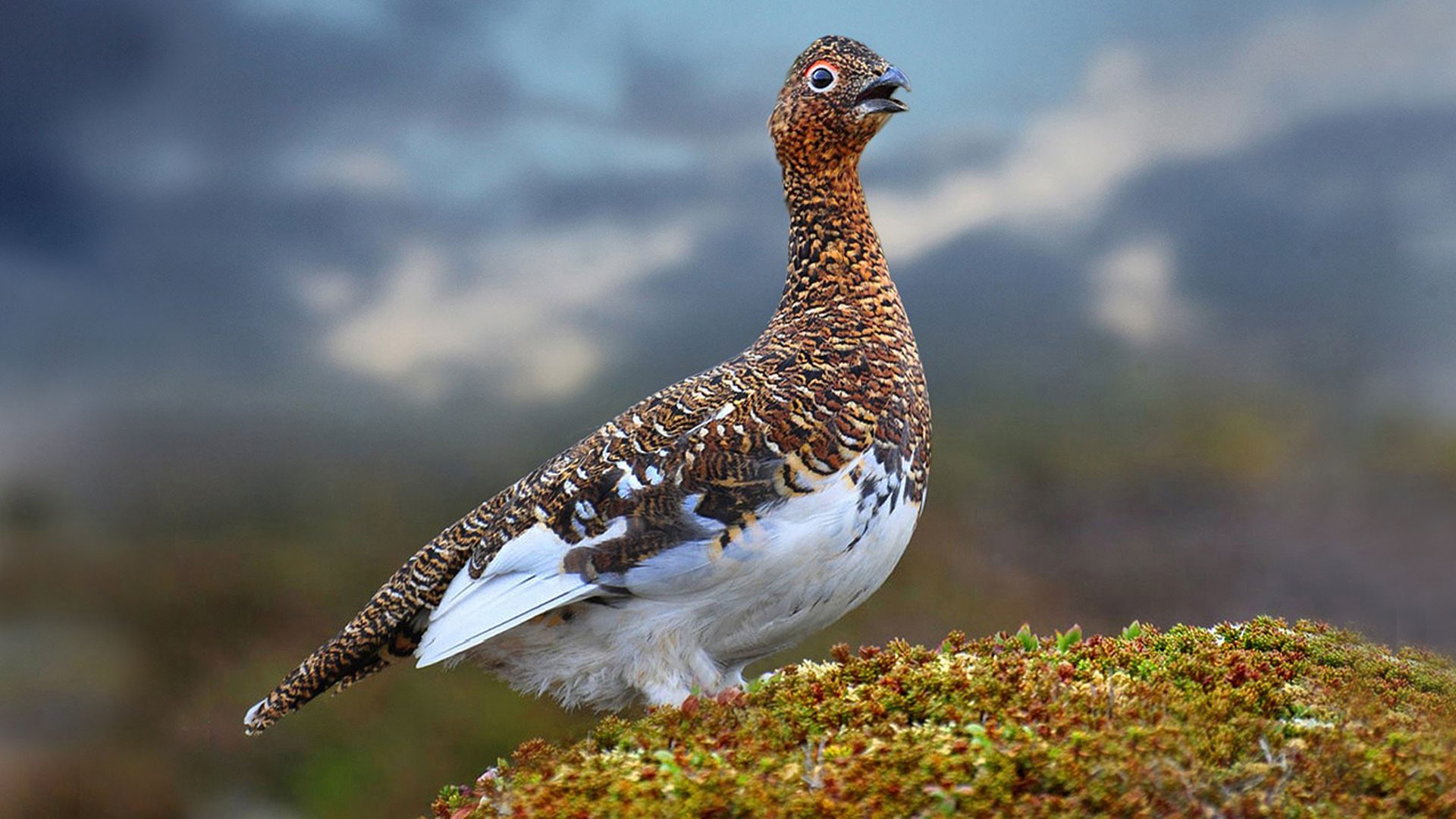
Rock ptarmigan and willow ptarmigan belong to the pheasant family. The rock ptarmigan is smaller than the willow ptarmigan. The rock ptarmigan is also known as a cormorant. The rock ptarmigan is to be found higher up in the mountains than the willow grouse. Both species have white plumage in the winter. The summer plumage of the willow grouse is reddish brown with a white underside and white wings, but the willow ptarmigan is more of a stony-grey. Grouse are non-migratory birds.
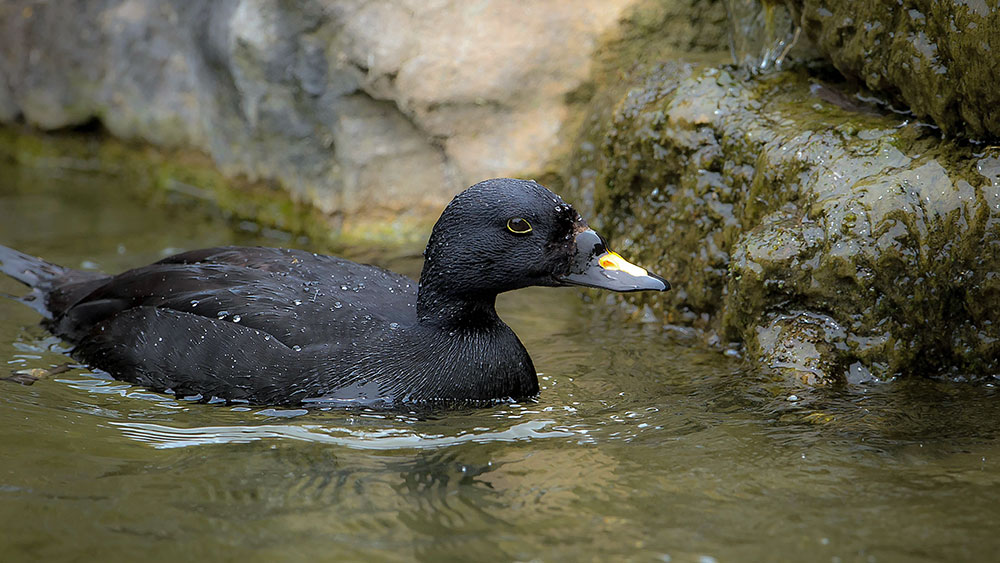
The black duck is, as the name implies, a duck where the males are completely black. The female is more of a brownish colour. It is a relatively small diving duck and nests by fresh water in the mountains but overwinters by salt water on the coast.
Birds
Bring your binoculars! What can you see?
Birds of prey like the peregrine falcon and golden eagle can be spotted in the national park. They start nesting already at the end of March but can easily be disturbed. Both the large birds and grouse thrive in the coniferous forests, and there is also good habitat for the black grouse, which is increasingly under threat of extinction, both in the birch forest and in the mountains. Lake Stråsjøen and the island of Prestøya, the Torsbjørkdalen valley and the Kalvskinnsfloene waters are examples of important habitats for several ducks and wetland birds.

The red-throated diver is a species of bird from the diver (US. loon) family and resembles the Black-throated diver (US. Arctic loon). In the spring/summer it changes its plumage on its back which becomes a dark brown-grey, and unlike the Black-throated diver does not have white spots. The red-throated diver has a dark, reddish-brown throat patch which can look like the black-throated diver’s black-speckled throat patch. The Red-throated diver nests by higher-situated ponds and lakes. Both the Red-throated diver and the Black-throated diver are partly migratory birds, migrating primarily southwards down the Norwegian coast in winter.

The Siberian jay is a member of the crow family. It has a trusting nature and can be a friendly visitor at picnic areas in the mountain forests. The Siberian jay is easily recognisable by its rusty-brown plumage and paler forehead. It lives in the forests close to the mountains all year round making it one of the national park’s resident birds

The common crane is a large, beautiful bird that belongs to the crane family. It has long legs, a long neck and flies with its neck extended. The sound of its call resembles a trumpet. The common crane nests on bogs both in the forest and mountains. Norwegian crane winter, primarily, in Spain.

Peregrine falcons and golden eagles are among the birds of prey to be found in the national park. Of the two, it is much rarer to see a peregrine falcon. It is endangered because of the low number of grouse in the national park, and because it is one of the breeds targeted by egg collectors. The golden eagle is the second largest bird of prey after the sea eagle. It feeds on other birds and small game; however, it is sometimes known to catch larger game such as reindeer calves. It also eats carrion.
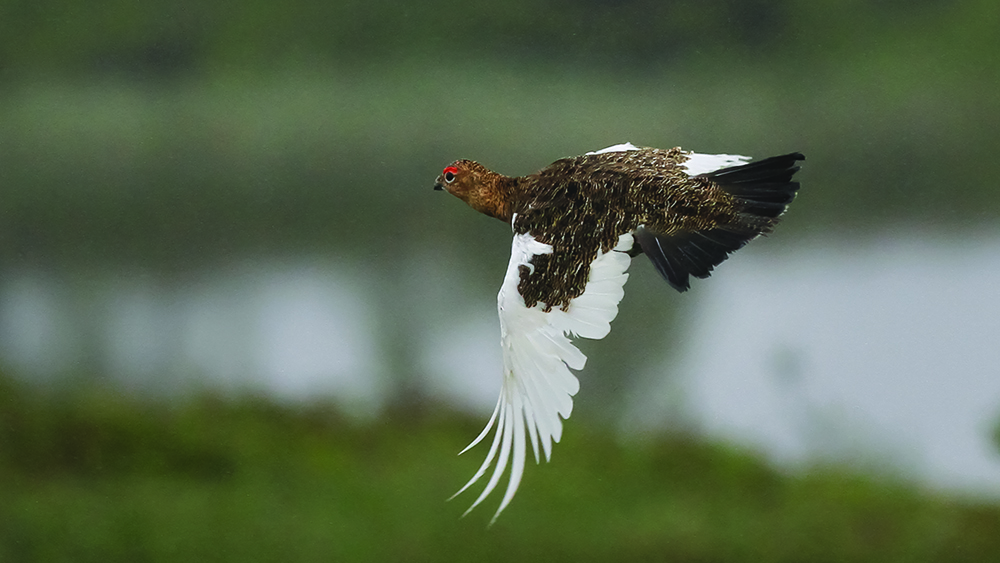
Rock ptarmigan and willow ptarmigan belong to the pheasant family. The rock ptarmigan is smaller than the willow ptarmigan. The rock ptarmigan is also known as a cormorant. The rock ptarmigan is to be found higher up in the mountains than the willow grouse. Both species have white plumage in the winter. The summer plumage of the willow grouse is reddish brown with a white underside and white wings, but the willow ptarmigan is more of a stony-grey. Grouse are non-migratory birds.

The black duck is, as the name implies, a duck where the males are completely black. The female is more of a brownish colour. It is a relatively small diving duck and nests by fresh water in the mountains but overwinters by salt water on the coast.
Contact us
The National Park for Skarvan and Roltdalen and Sylan
Postbox 2600
7734 STEINKJER
Tel: 73 19 93 11
Email: lars.slettom@statsforvalteren.no
